The 7th Annual Sage Grouse Initiative (SGI) Meeting and Workshop was recently held in Gunnison, Colorado. This meeting brought together biologists, private landowners, land managers and conservation partners to learn about innovative, practical techniques for habitat improvement and restoration on sagebrush rangelands. Conservation easements and mesic restoration (wet meadows, waterways and riparian areas) were hot topics. And, while the conservation approaches explored during the workshop are designed to improve habitat for Gunnison and Greater Sage-Grouse, such efforts also provide benefits for other wildlife, as well as increasing ranch land productivity.
“We’re finding common ground for a common goal: healthy working lands and wildlife in the West,” ~Noreen Walsh, regional director of the U.S. Fish & Wildlife Service
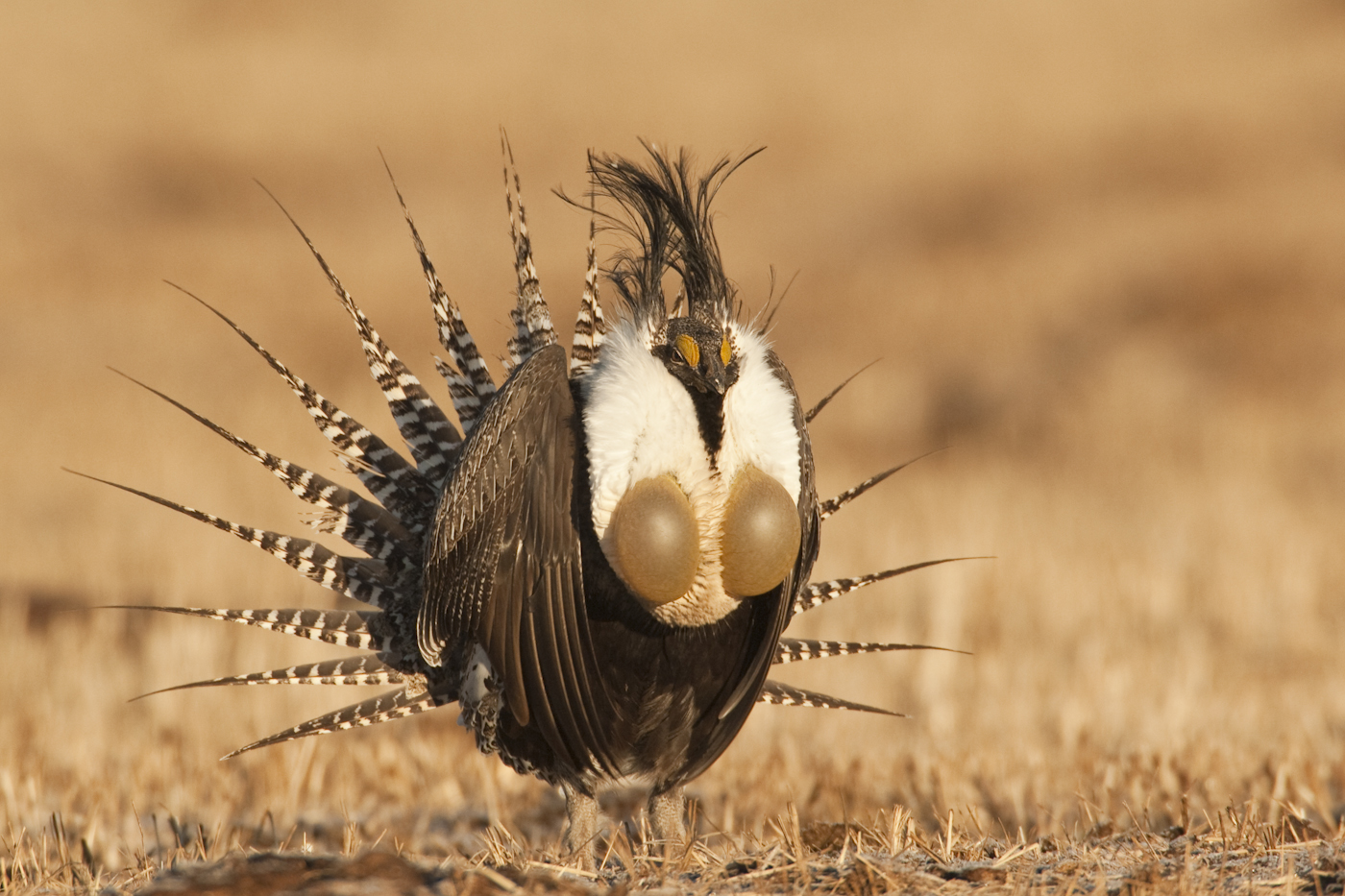
A male Gunnison Sage-Grouse put on a display early in the morning at Mill Creek Ranch in Gunnison, CO. This species is found only in southwestern Colorado and southeastern Utah. They occupy only about 7-10% of their original range, and were listed as threatened under the Endangered Species Act in 2014. Photo by by Noppadol Paothong

Wet meadows in sagebrush country provide vital forage and water for livestock, sage grouse and other wildlife.
Photo by Marcella Fremgen
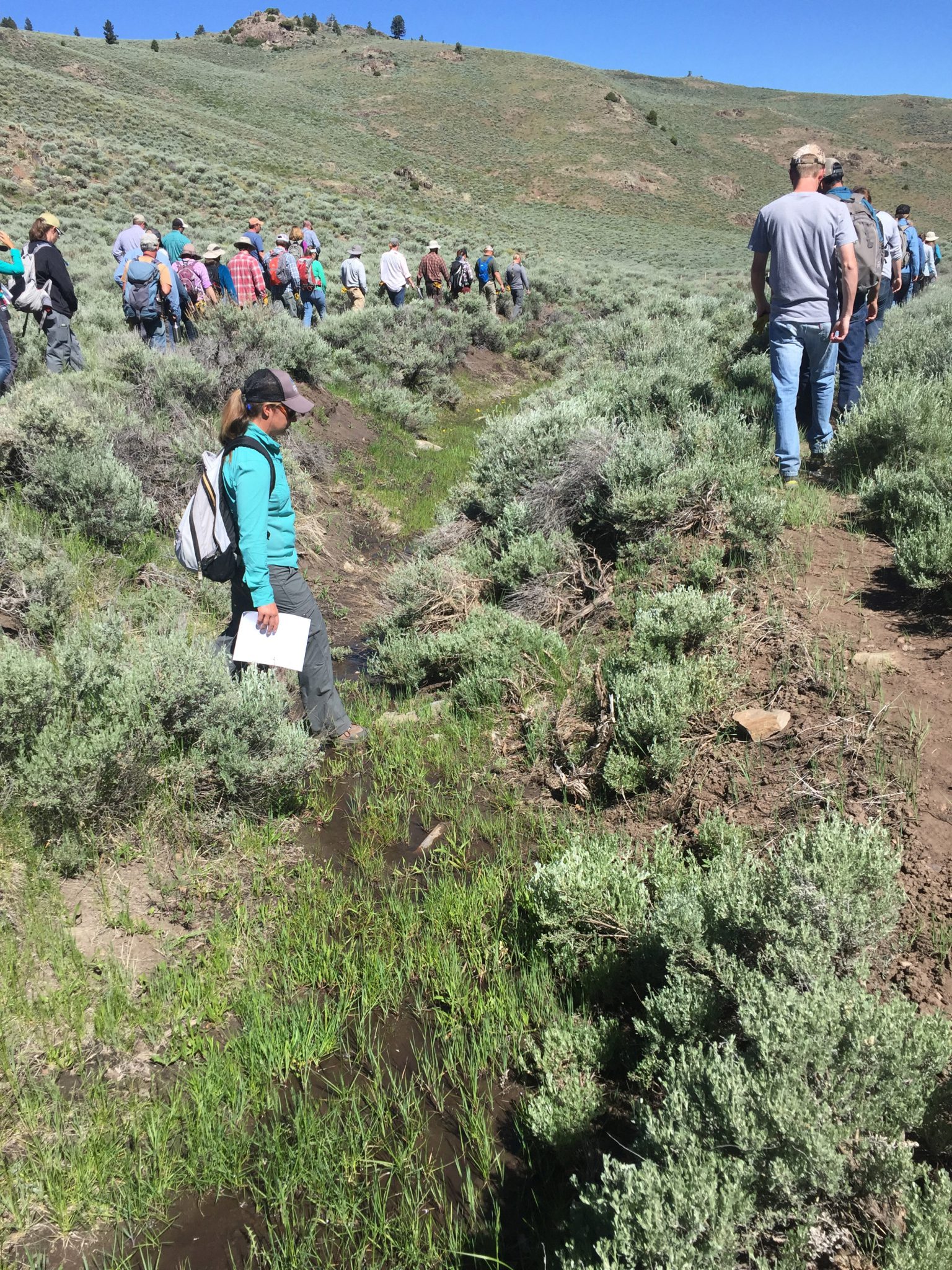
Through hands-on experiences in the landscape, participants learned surprisingly simple techniques
that can help restore degraded wet meadows and streams.
Conservation easements are a powerful conservation tool to guide and limit future development. Although there are several kinds of easements, the most common type allows a land trust to purchase development rights for a parcel, permanently protecting the land from future subdivision and development of housing and infrastructure. This benefits wildlife and birds by keeping habitat intact, but also benefits people by maintaining the natural aesthetic, keeping working lands working, and allowing families to pass their ranch down from one generation to the next. Bird Conservancy Stewardship biologists frequently work with landowners to connect them with land trusts and help with baseline monitoring for easement acquisition. Bird Conservancy biologist Kelsea Holloway, in Greeley, specializes on the use of easements to maintain wetland habitats along the North Platte River.
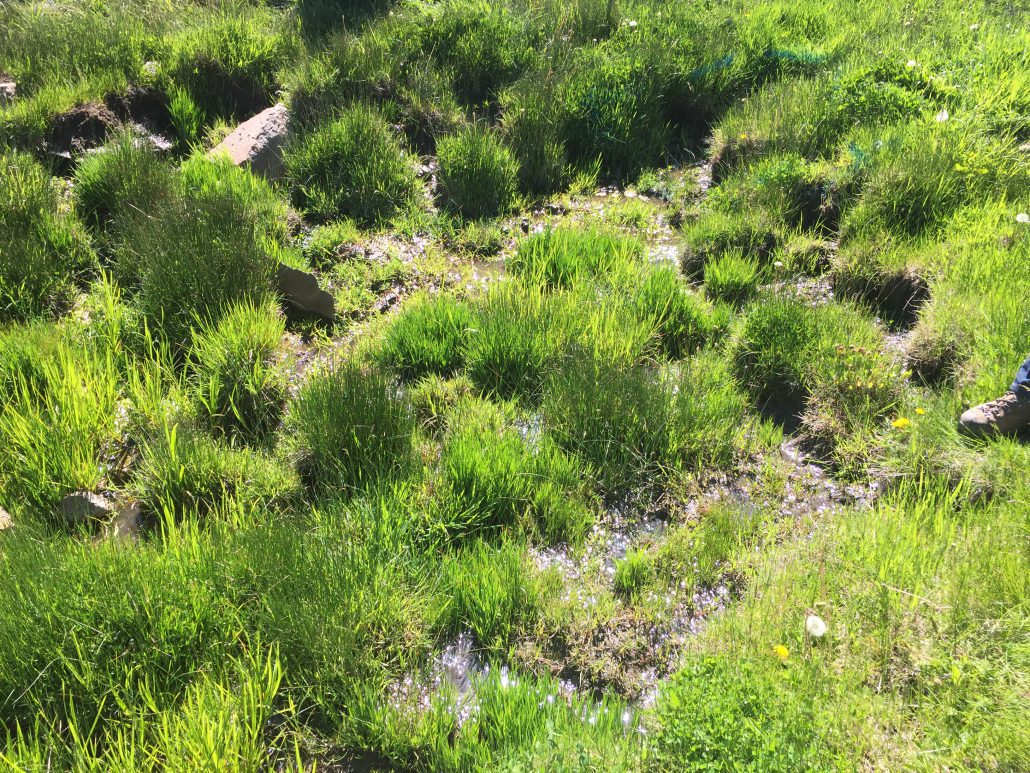
Water is like gold on the dry sagebrush landscape and important for livestock, wildlife, birds and people alike.
Photo by Marcella Fremgen
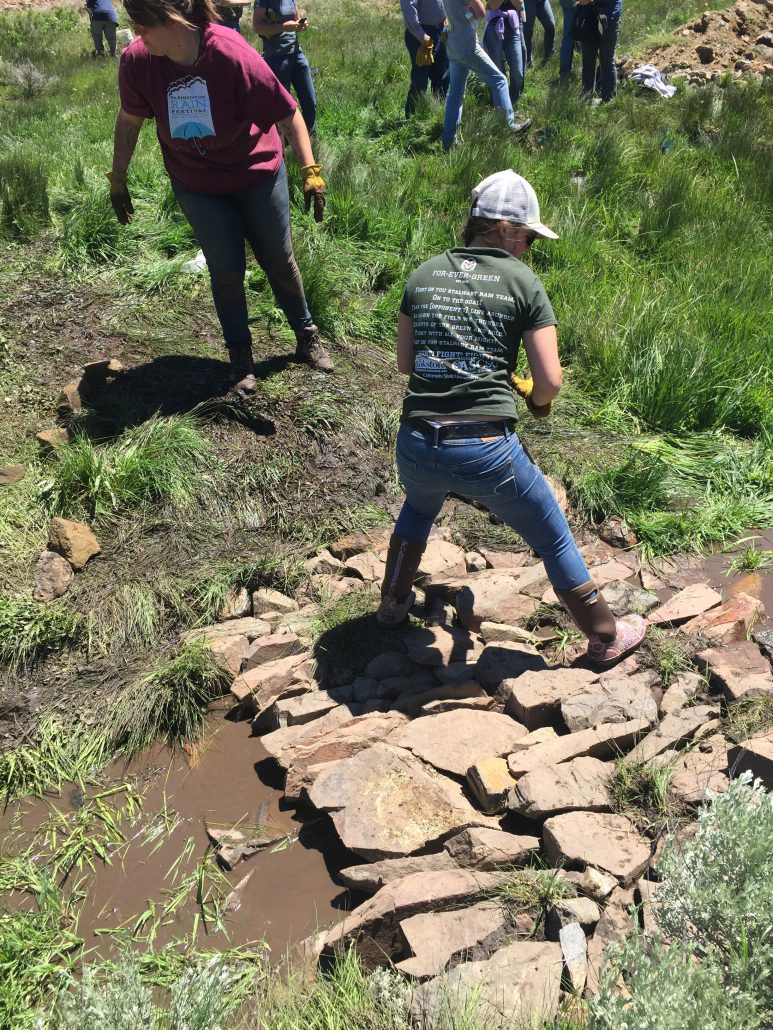
Using brains, brawn and teamwork, participants build a “one-rock dam” that will help regulate water flow across the landscape. Photo by Marcella Fremgen
Mesic restoration is another valuable tool for restoration of sagebrush rangelands, as grouse rely heavily on mesic (wetter than surrounding sagebrush) habitats to raise their chicks. These areas are relatively rare across the landscape, and are often degraded by drought, grazing, and invasive species. Over time, channels may become incised and lower the water table, reducing the vegetation for both grouse and cattle forage. The workshop featured practical mesic restoration techniques, such as using simple rock structures to slow the flow of water and allow it to spread across the drainage or wet meadow so it can seep in slowly. This promotes the growth of plants in the floodplain, increases the abundance of insects (food for chicks), and should also result in increased use by sage-grouse broods. Stewardship biologists in Montrose (Marcella Fremgen), Steamboat (Becky Jones), and Durango (Kristina Kline) will employ these techniques in future projects to benefit grouse and other birds. The Gunnison Wet Meadow Restoration Project brings together partners in the Gunnison Basin, working collaboratively to install 1,112 wet meadow restoration structures in the last five years, one-third of which are on private land.
“This project is a ‘no-lose’ strategy. By retaining moisture, we reduce soil loss, build resiliency, and increase forage for livestock. It’s bigger than any one species.” ~Liz With, USDA Natural Resources Conservation Service (NRCS)
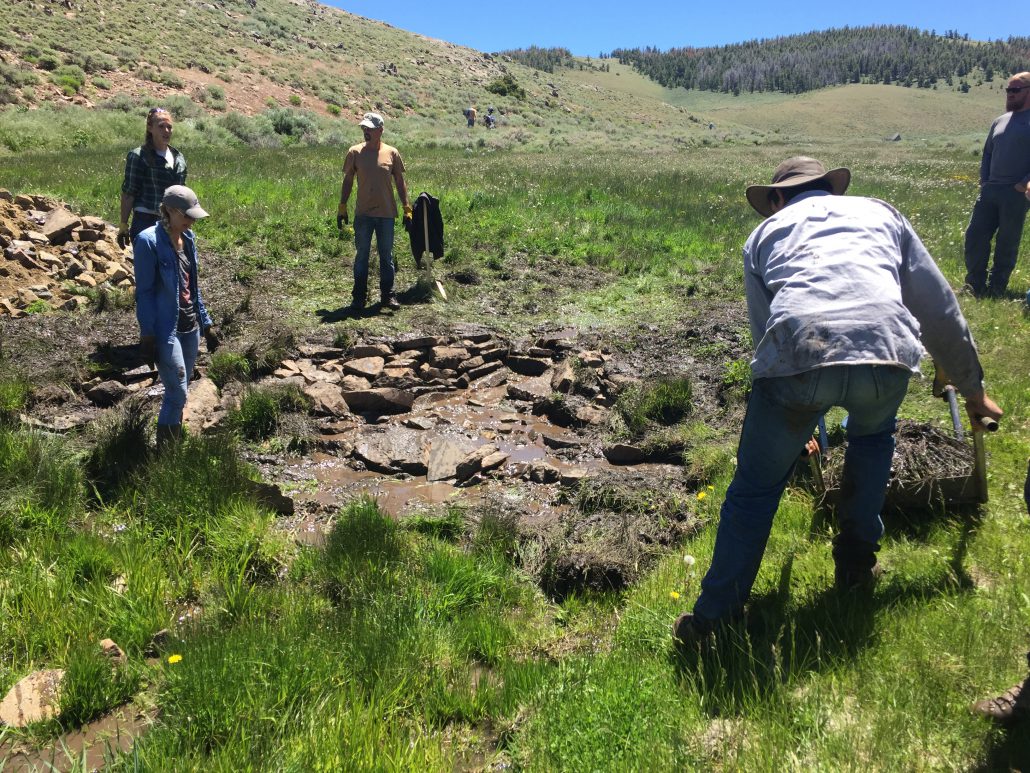
Participants get their hands dirty installing simple rock structures to reduce water flow,
improve natural water storage and restoring wet habitat. Photo by Marcella Fremgen
Collaborative workshops like this provide great opportunities to share and learn from others, and gain new knowledge and skills that can be applied to conservation projects. Importantly, this gathering also provided a national stage to showcase collaborative efforts in the range of Gunnison Sage-Grouse, including previous and current biologists in the Stewardship program. Community-based, locally-led cooperative efforts in the region are showing how both “the bird and the herd” can not only co-exist on sagebrush lands, but thrive.
Enjoy this video featuring highlights from the workshop!
To learn more about conservation and restoration on private lands, visit our Stewardship contacts page.
The Sage Grouse Initiative is a partnership-based, science-driven effort that uses voluntary incentives to proactively conserve America’s western rangelands, wildlife, and rural way of life. This initiative is part of Working Lands For Wildlife, which is led by USDA’s Natural Resources Conservation Service. The SGI partnership includes Bird Conservancy of the Rockies, The Nature Conservancy, the Mule Deer Foundation, and the Intermountain West Joint Venture along with dozens of other partners working across 11 states.
Marcella Tarantino (based in Gunnison, CO) is employed by Bird Conservancy of the Rockies with funding support from NRCS and U.S. Fish and Wildlife Services.



